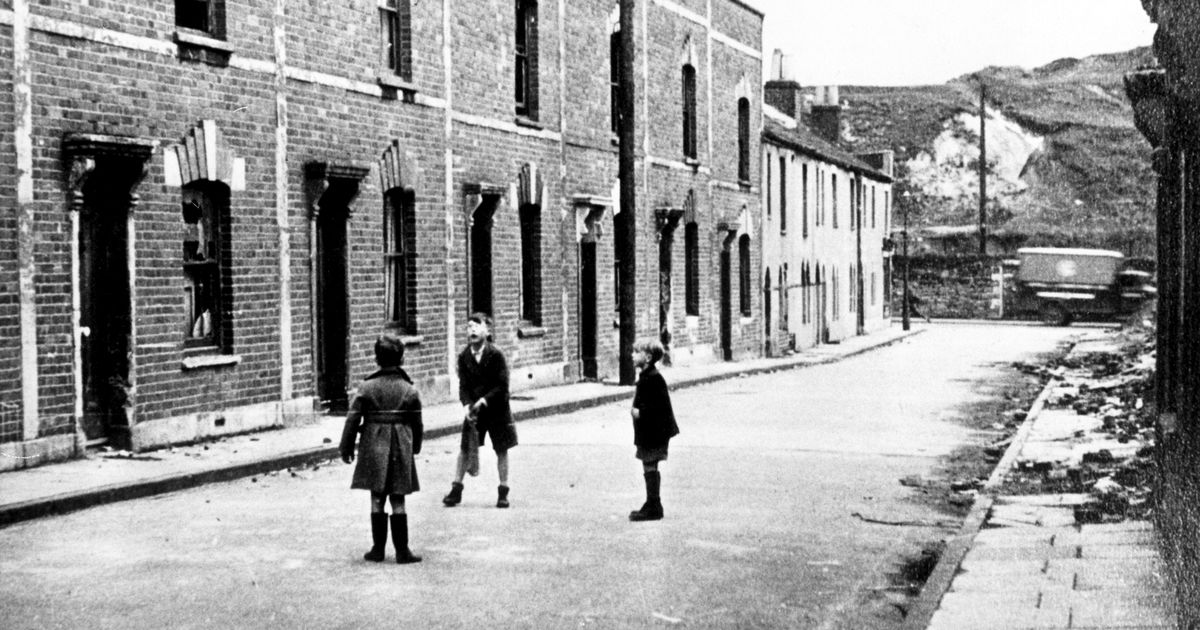There used to be three pubs in one street and a queue for end-of-day bargains at the bakery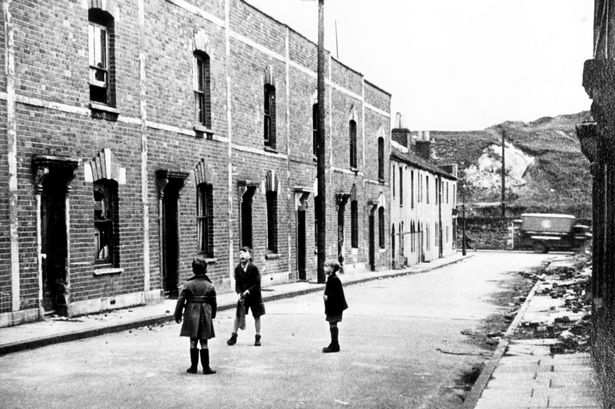 A game of cricket in the street at Barton Hill, 1943(Image: Mirrorpix)
A game of cricket in the street at Barton Hill, 1943(Image: Mirrorpix)
Memories have been shared of one of Bristol’s inner city suburbs before its reinvention in the 1950s. Barton Hill is still home to some of the red brick terraces built during Victorian times, but is now better recognised for the tower blocks that have dominated the skyline since the city’s post-war ‘slum clearance’.
Two residents reflected on the area’s transformation during a 1997 interview with the Bristol Post. Ernie Webber and Harry Griffin, both 76 at the time, were born in Barton Hill in neighbouring streets and rekindled their friendship in later life as part of Barton Hill History Group.
The article noted that the neighbourhood was “was once home to 12,000 souls accommodated in red brick Victorian terraces, many of the properties in poor repair and with bathrooms and indoor loos nowhere to be seen”. However, the pair still had fond memories of growing up in the area, which saw widespread demolition in the 1950s and 1960s.
The Post reported at the time: “As kids, their football, cricket, hop-scotch and whip-and-top games took place in Winstanley Street, Strode Street, Canterbury Street or Meyrick Street – all long gone. There were three pubs in one street – the Weavers Arms, Mechanics Arms and Beaufort Arms – and dozens of shops.
“All were reduced to rubble to answer Bristol’s post-war housing needs in the form of multi-storey flats. All that remains now is the school, the Rhubarb Tavern, the baths – recently closed – and St Luke’s Church.”
Just last year, a flats plan was approved for the Rhubarb Tavern – the last pub left standing in Barton Hill – despite efforts to save it. The neighbourhood school is now Barton Hill Academy.
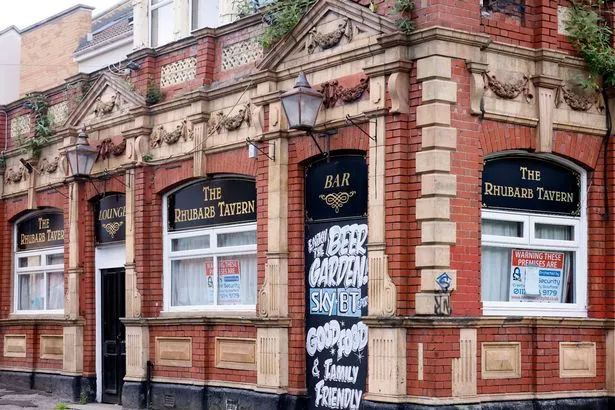 File image of the Rhubarb Tavern in Barton Hill while it was still open(Image: Bristol Post archive)
File image of the Rhubarb Tavern in Barton Hill while it was still open(Image: Bristol Post archive)
The pair recalled moving from one school to the ‘upper school’ in Meyrick Road once they turned eight, and said they would “of course salute the teachers if we happened to meet in the street out of school hours”. Children would go for a dip in the local baths or even in a swim in the Feeder Canal if they dared.
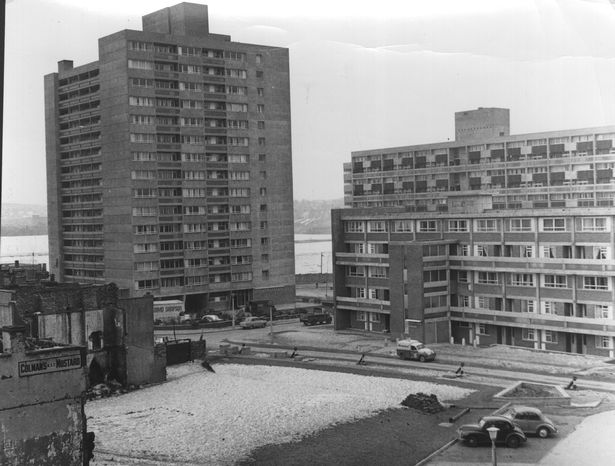 New high rise living at Barton Hill Flats, Bristol, in 1963, as old buildings nearby are demolished(Image: Mirrorpix)
New high rise living at Barton Hill Flats, Bristol, in 1963, as old buildings nearby are demolished(Image: Mirrorpix)
The article continued: “There was much poverty in the area. On a Monday morning, a queue always formed outside Swaish’s, pawnbrokers opposite the baths, as people struggled to raise money for the week’s rent.
“Prices Bakery in Salisbury Street was always guaranteed a queue at the end of a day when left-over cakes and buns were sold off at a penny a bag.” Ernie even remembered cows “wandering into someone’s front garden” on their journey from the cattle market to slaughter houses behind various Barton Hill butchers’ shops.
The ‘slum clearance’ wrecking ball arrived in summer 1953. According to Barton Hill History Group, demolition began in the old cotton works area, home to the oldest houses in Barton Hill dating back to the 1830s.
The streets marked for clearance were Barton Street, Bush Street, Aiken Street, Great Western Lane, Factory Street, Manchester Street and Phoenix Street, according to the history group. However, not everyone welcomed the regeneration.
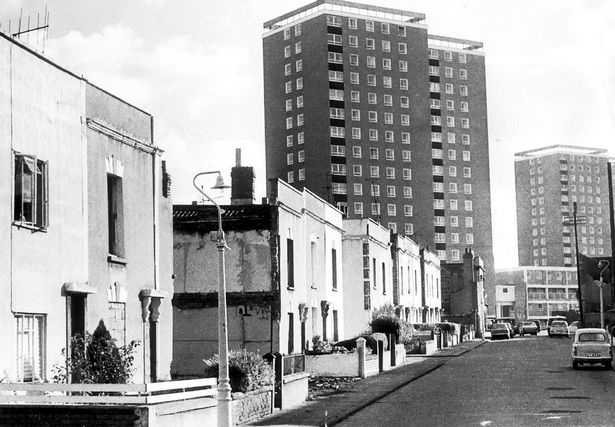 Barton Hill flats, Bristol’s first tower blocks, loom over the old terraced housing in around 1960(Image: Mirrorpix)
Barton Hill flats, Bristol’s first tower blocks, loom over the old terraced housing in around 1960(Image: Mirrorpix)
Bristol City Council’s museum archive notes that: “The council used their slum-clearance powers to demolish many of the houses in Barton Hill. Residents were upset that their houses were destroyed and objected to the term ‘slum’.”
By 1958, the landmark tower block Barton House had opened. At the time, it was the tallest block of multi-storey flats outside London.
Since then, the area has seen several waves of change – most recently with the arrival of the East Bristol Liveable Neighbourhood. Back in October 2012, the Post reported on fresh hope for the neighbourhood and a new Sovereign Housing development.
The article read: “For a generation, lumbering urban sixties tower blocks and a landscape of social deprivation became synonymous with Barton Hill, but now work has been completed on a multi-million-pound, 10-year regeneration, designed to give the district a brighter future.
“After the destruction of the Blitz and the over-zealous post-war policy of ‘slum clearance’, the high-rise tower blocks became a grim symbol of this patch of the city. But there were cheers yesterday as construction was formally completed on the final phase of an ambitious £25-million regeneration scheme.”
The five-year “masterplan” for Barton Hill included building 131 new homes under the New Deal for Communities (NDC) Government initiative. Other improved facilities included Barton Hill Primary School, a new public park and The Wellspring Centre.
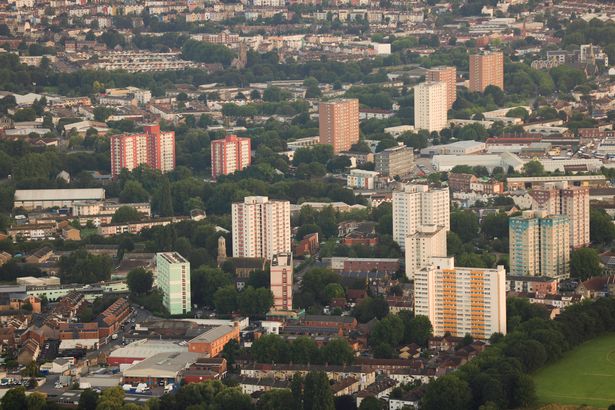 Aerial view of Bristol including the tower blocks in Barton Hill(Image: James Beck/BristolLive)
Aerial view of Bristol including the tower blocks in Barton Hill(Image: James Beck/BristolLive)
The same article quoted Terry Black, Sovereign Housing’s neighbourhood co-ordinator for the area, who said at the time: “At its lowest point, in the 1990s, Barton Hill was a place that had a real stigma attached to it. Nobody wanted to say they lived in Barton Hill then. It was seen as a rough area, with soaring crime and more than its share of antisocial behaviour. But all that is in the past.”
Government funding was first awarded in 1999, according to the article, for new housing in Barton Hill including some on the site of two low-level tower tenement blocks. In the article, Mr Black described the blocks as “particularly dreadful” crime hotspots, adding: “It quickly became clear that the residents wanted them razed to the ground. The difference it has made is remarkable.”
Last month, Bristol Live reported on the current situation in Barton Hill. Residents described it as a diverse and caring neighbourhood where strangers ‘say hello’ and kids are looked after. Although they highlighted ongoing obstacles and disadvantage, they also spoke of a friendly community and welcome investment in local green spaces such as Barton Hill Urban Park and Newtown Park.
